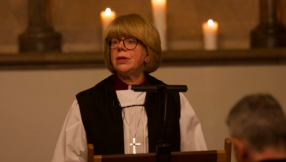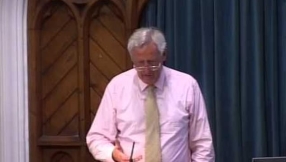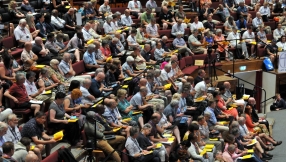Rebuilt house of martyred missionary Nate Saint opens in Ecuador
Among those at the opening was Gilberto Nenquimo, the grandson of Mincaye, one of the men who killed Nate Saint, Jim Elliot, Peter Fleming, Ed McCully, and Roger Youderian on 8 January 1956.
The house built in Shell Mera by Nate Saint and a missionary team in 1948 to be used as a guesthouse, radio centre and the living quarters for his family.
The house was used as an airbase for sending out supplies to other missionaries in the area and as a base for Operation Auca, the name given to their efforts to evangelise the Waodani people.
The old structure has been replaced after it became badly damaged by termites and the heavy rain that deluges the eastern Andean foothills.
More than 250 people attending the official unveiling of the house, which included an open house walkthrough. MAF leaders from Ecuador and abroad shared at the event.
Nenquimo now pastors a Waodani church on the edge of the jungle and shared about how the story of his grandfather and Nate Saint became more real to him as he grew older. Nenquimo eventually decided to become a Christian and help his fellow Waodani learn more about the Gospel.
According to MAF, Chris Nevins, founder of the non-profit group Fuel the Mission, oversaw the construction project, which took four months to complete and utilised about 20 percent of the lumber from the original house. Due to a severe infestation of flying termites in the house, Nevins estimated that it would have collapsed within a year without intervention.
"Instead of working 10-12 hours a day on something that doesn't matter that much, this was an opportunity for us to do something that really mattered," said Nevins.
"This house represents a powerful story that has inspired and encouraged so many people in missions. We know that God didn't want this story to just go away," he said.
During the four months Nevins has been working on the project, he estimated more than 400 people from various organisations and mission teams have visited the house due to the story popularised by the 2006 motion picture, "The End of the Spear."
As a result, Nevins and his team of eight Ecuadorians and other short-term work crews preserved the front two rooms in the house.
The radio room displayed prominently in the movie, as well as the kitchen captured in a famous 1956 Life magazine photo, were restored to look much like they did when Nate Saint first built the house in 1948.
Nevins also converted a front storage room into a historical display of MAF and Saint in Ecuador, which includes a display of Ecuador's stamp collection honoring Saint.
"We are thankful to God for the team at Fuel the Mission and the many volunteers who worked on the house," said Dan Whitehead, the US manager of the MAF programme in Ecuador, adding: "They turned this building into useful space that will be used for many years to come."
In past decades, the house was used as a guesthouse and was occupied some 300 nights a year by missionaries going in and out of the Amazon jungle. It now will have one small upstairs apartment, with the remaining space used for meetings and MAF offices.
Founded in 1945, MAF transports missionaries, medical personnel and supplies, performs disaster relief work, and conducts thousands of emergency medical evacuations in remote areas.
MAF also provides distance learning services, as well as telecommunications services such as satellite Internet access, high-frequency radios, electronic mail and other wireless systems.













